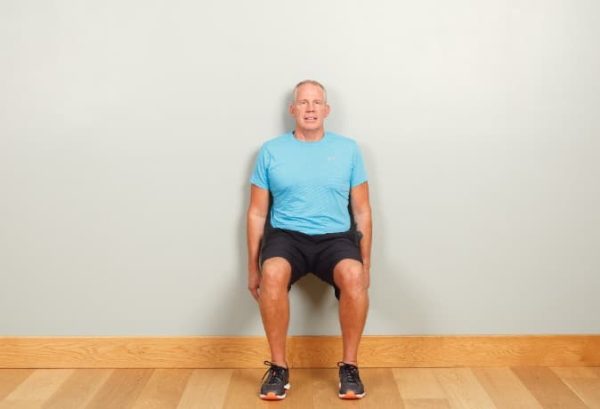In your golden years, it’s not uncommon to experience back pain, an issue that impacts the quality of life for many older adults. As you get older, your body undergoes natural changes, such as loss of bone density and muscle mass, that can lead to discomfort and pain in the back. Staying active and maintaining an exercise routine targeted at alleviating back pain can make a world of difference. This post aims to provide a comprehensive guide to gentle back pain exercises designed specifically for seniors. With patience, consistency, and these exercises, older adults can maintain a higher level of independence and enjoy an active, pain-reduced lifestyle.
Potential Causes Of Back Pain In The Elderly
Back pain in the elderly can stem from a multitude of factors. Common culprits include osteoarthritis, spinal stenosis, and degenerative changes in the discs and joints of the spine. These conditions typically result from the natural process of aging, where your body gradually loses bone density and muscle strength.
Understanding the physiological changes accompanying aging can explain why maintaining an active lifestyle is vital. The less you move, the weaker your muscles get, exacerbating back pain. Furthermore, regular movement keeps your joints flexible, helping to prevent stiffness and pain.
The Role Of Exercise In Back Pain Management
Regular exercise plays a crucial role in managing back pain. Physical activity can strengthen the muscles that support the spine, improve flexibility and mobility, and enhance overall back health. When these muscles are robust and flexible, they better protect the spine and mitigate the likelihood of injury, reducing the incidence of back pain.
Moreover, specific exercises targeting the back can relieve existing pain. By gently working the muscles in the lower and upper back, these exercises can release tension, promote better posture, and enhance overall function.
Precautions Before Starting Exercises
Before embarking on any exercise routine, it’s crucial to get medical clearance. A healthcare provider can assess your overall health and provide personalized recommendations based on your physical capabilities. They can also help modify these exercises to accommodate any current health conditions or mobility limitations you might have.
Seniors must take special care when starting these exercises. Always remember to listen to your body and not to push too hard. The goal of these exercises is to alleviate back pain, not cause additional discomfort.
The Warm-up Routine
Warming up before exercise is crucial, especially for seniors, as it prepares your body for physical activity and helps prevent injuries. Simple warm-up exercises like a slow walk or gentle range-of-motion exercises can increase blood flow and loosen up the muscles and joints.
For instance, shoulder rolls and neck stretches can help increase mobility and flexibility in the upper body, preparing the body for the back exercises to follow. Warming up can also help increase your heart rate slowly and safely, ensuring that you can maintain a steady pace throughout your exercise session.
Exercise 1: Seated Lower Back Rotational Stretches
The seated lower back rotational stretch is an excellent exercise to increase mobility in your lower back and hips while seated. To begin, sit on a sturdy, armless chair with your feet flat on the ground. Cross your arms over your chest and rotate your upper body to one side, keeping your hips square and your spine tall. You should feel a gentle stretch in your lower back.
Hold this position for several seconds before returning to the starting position. Repeat the exercise on the other side. This exercise can be beneficial in promoting flexibility in the spine, enhancing the range of motion, and relieving tension in the lower back. Remember to perform this exercise gently and never force a stretch.
Exercise 2: Gentle Back Extension
The gentle back extension is another exercise that seniors can safely perform to alleviate back pain. Start by lying flat on your stomach with your arms by your side. Gently lift your head and shoulders off the ground using your back muscles. Ensure you maintain a comfortable and slow pace throughout this exercise.
The key to this exercise is not to strain your neck or push past your comfort zone. The gentle back extension focuses on strengthening the back muscles, particularly those that support your spine. A stronger back can help improve posture and decrease the chances of back pain.
Exercise 3: Knee-To-Chest Stretches
Knee-to-chest stretches can alleviate tension in your lower back. Begin by laying flat on your back on a comfortable surface, like a yoga mat. Bend your knees and place your feet flat on the ground. Slowly bring one knee up to your chest, using your hands for support.
Hold this position for several seconds, then slowly lower your leg back to the starting position. Repeat this with the other leg. This exercise provides a gentle stretch to your lower back, promoting flexibility and relieving discomfort associated with stiffness.
Exercise 4: Standing Wall Leans
Standing wall leans are an excellent way to work the back muscles and improve overall posture. Stand up straight with your back against a wall and your feet shoulder-width apart. Slowly lean back into the wall, keeping your abdominal muscles engaged and your back straight.
Hold this position for a few seconds before returning to the standing position. Regular practice of this exercise can strengthen the back muscles, leading to better posture and reduced back pain.
Exercise 5: The Pelvic Tilt
The pelvic tilt is a beneficial exercise that targets the lower back and abdomen, promoting stronger core muscles. Lie flat on your back on a comfortable surface, bend your knees, and keep your feet flat on the ground. Slowly lift your pelvis and lower back off the ground, engaging your abdominal muscles as you do so.
Hold this position for a few seconds before slowly lowering your pelvis back to the ground. Regular practice of the pelvic tilt can help alleviate lower back pain by strengthening the abdominal and lower back muscles.
Cooldown And Stretching
Cooldown exercises are as important as the warm-up. They help your heart rate and breathing return to resting levels and can also prevent muscle stiffness. Gentle range-of-motion exercises, similar to those performed during the warm-up, are suitable for a cooldown.
Stretching after exercising is essential for maintaining flexibility and mobility. Gentle back stretches can help alleviate tension in the muscles and promote recovery. Remember to hold each stretch for about 30 seconds and avoid any movements that cause pain or discomfort.
Maintaining A Regular Exercise Routine
Consistency in exercise is key for long-term benefits. Incorporating these back pain exercises into your daily routine can help manage and alleviate back pain. Ideally, you should perform these exercises at least once a day. If you struggle to maintain a regular routine, try scheduling your exercises at the same time each day, or incorporate them into an existing routine.
For example, you could do your exercises after breakfast each morning. This gives you the perfect opportunity to wake up your body and set yourself up for a productive day. Additionally, if you have difficulty finding time for exercise, consider breaking exercises into shorter sessions throughout your day. If in doubt, consult with a physiotherapist or doctor to get advice on a suitable exercise routine to help manage back pain.
Give These Exercises A Try To Help Eliviate Back Pain!
Back pain in the elderly may be common, but it doesn’t have to rule your life. By maintaining an active lifestyle and incorporating these gentle exercises into your daily routine, you can combat back pain effectively. Consistency is key, so try to stick to a regular schedule of these exercises. Don’t push too hard—remember, these exercises are meant to alleviate back pain, not cause it. Above all, listen to your body and seek professional help if your back pain worsens or persists. Life’s golden years should be just that: a time to enjoy life to the fullest, free from the confines of persistent back pain. Let’s embrace a healthier, more active future together.
Resources
- National Institute on Aging: Exercise and Physical Activity
- Harvard Health Publishing: The real-world benefits of strengthening your core
- Mayo Clinic: Slide show: Back exercises in 15 minutes a day
- Spine-Health: Easy Hamstring Stretches










